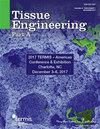使用仿生聚合物的生物工程肝脏抗血栓再血管化策略。
引用次数: 0
摘要
生物工程肝脏有可能挽救终末期肝病患者,而三维脱细胞支架是一种很有前景的实用方法。生物工程肝移植的主要挑战是血液灌注过程中的血栓形成。我们旨在应用一种新型抗血栓聚合物对肝脏支架进行血管再造,并评估经聚合物处理的支架的血栓形成性和生物安全性。研究人员制备了一种生物仿生聚合物--2-甲基丙烯酰氧乙基磷酰胆碱(MPC),用于修饰肝脏支架的细胞外基质(ECM)。将该聚合物注入大鼠肝脏支架的门静脉(PV)后,可与血管壁发生广泛反应。在体外血液灌流实验中,我们发现聚合物处理过的支架中血小板沉积明显少于未处理过或用人脐带内皮细胞(HUVECs)重新内皮化过的支架。在异位移植模型中,聚合物处理组能更好地保持肝脏体积,并抑制血小板沉积。此外,经聚合物处理的肝脏支架还能在灌注培养过程中维持再细胞化大鼠原代肝细胞的代谢功能。经 MPC 聚合物处理的肝脏支架可有效抑制血液灌流过程中血栓的形成,并维持再细胞化肝细胞的功能。使用这种聚合物对肝脏支架进行血管再造是一种很有前景的生物工程肝脏移植方法。本文章由计算机程序翻译,如有差异,请以英文原文为准。
Antithrombotic revascularization strategy of bioengineered liver using a biomimetic polymer.
A bioengineered liver has the potential to save patients with end-stage liver disease, and a three-dimensional decellularized scaffold is a promising approach for practical use. The main challenge in bioengineered liver transplantation is thrombogenicity during blood perfusion. We aimed to apply a novel antithrombotic polymer to revascularize liver scaffolds and evaluate the thrombogenicity and biosafety of the polymer-treated scaffolds. A biomimetic polymer, 2-metacryloyloxyethyl phosphorylcholine (MPC) was prepared for modification of the extracellular matrix (ECM) in liver scaffolds. The polymer was injected into the rat liver scaffolds' portal vein (PV) and could extensively react to the vessel walls. In an ex-vivo blood perfusion experiment, we demonstrated significantly less platelet deposition in the polymer-treated scaffolds than non-treated or re-endothelialized scaffolds with human umbilical endothelial cells (HUVECs). In the heterotopic transplantation model, liver volume was better maintained in the polymer-treated groups and platelet deposition was suppressed in these groups. Additionally, the polymer-treated liver scaffolds maintained the metabolic function of the recellularized rat primary hepatocytes during perfusion culture. The MPC polymer treatment efficiently suppressed thrombus formation during blood perfusion in liver scaffolds and maintained the function of recellularized hepatocytes. Revascularizing liver scaffolds using this polymer is a promising approach for bioengineered liver transplantation.
求助全文
通过发布文献求助,成功后即可免费获取论文全文。
去求助
来源期刊

Tissue Engineering Part A
CELL & TISSUE ENGINEERING-BIOTECHNOLOGY & APPLIED MICROBIOLOGY
自引率
0.00%
发文量
0
审稿时长
3 months
 求助内容:
求助内容: 应助结果提醒方式:
应助结果提醒方式:


